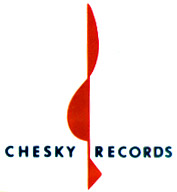
Digital video is an electronic representation of moving visual images (video) in the form of encoded digital data. This is in contrast to analog video, which represents moving visual images in the form of analog signals. Digital video comprises a series of digital images displayed in rapid succession, usually at 24, 25, 30, or 60 frames per second. Digital video has many advantages such as easy copying, multicasting, sharing and storage.

VHS is a standard for consumer-level analog video recording on tape cassettes, introduced in 1976 by the Victor Company of Japan (JVC). It was the dominant home video format throughout the tape media period in the 1980s and 1990s.

DV is a family of codecs and tape formats used for storing digital video, launched in 1995 by a consortium of video camera manufacturers led by Sony and Panasonic. It includes the recording or cassette formats DV, MiniDV, HDV, DVCAM, DVCPro, DVCPro50, DVCProHD, Digital8, and Digital-S. DV has been used primarily for video recording with camcorders in the amateur and professional sectors.

Digital Audio Tape is a signal recording and playback medium developed by Sony and introduced in 1987. In appearance it is similar to a Compact Cassette, using 3.81 mm / 0.15" magnetic tape enclosed in a protective shell, but is roughly half the size at 73 mm × 54 mm × 10.5 mm. The recording is digital rather than analog. DAT can record at sampling rates equal to, as well as higher and lower than a CD at 16 bits quantization. If a comparable digital source is copied without returning to the analogue domain, then the DAT will produce an exact clone, unlike other digital media such as Digital Compact Cassette or non-Hi-MD MiniDisc, both of which use a lossy data-reduction system.

Super Audio CD (SACD) is an optical disc format for audio storage introduced in 1999. It was developed jointly by Sony and Philips Electronics and intended to be the successor to the compact disc (CD) format.

S-VHS (スーパー・ヴィエイチエス), the common initialism for Super VHS, is an improved version of the VHS standard for consumer-level video recording. Victor Company of Japan introduced S-VHS in Japan in April 1987, with their JVC-branded HR-S7000 VCR, and in certain overseas markets soon afterward. By the end of 1987, the first S-VHS VCR models from other competitors included the Hitachi VT-2700A, Mitsubishi HS-423UR, Panasonic PV-S4764, RCA VPT-695HF, and Toshiba SV-950. It has been standardized as IEC 60774-3 and IEC 60774-4.

DVD-Audio is a digital format for delivering high-fidelity audio content on a DVD. DVD-Audio uses most of the storage on the disc for high-quality audio and is not intended to be a video delivery format.

Reel-to-reel audio tape recording, also called open reel recording, is magnetic tape audio recording in which the recording tape is spooled between reels. To prepare for use, the supply reel containing the tape is placed on a spindle or hub. The end of the tape is manually pulled from the reel, threaded through mechanical guides and over a tape head assembly, and attached by friction to the hub of the second, initially empty takeup reel. Reel-to-reel systems use tape that is 1⁄4, 1⁄2, 1, or 2 inches wide, which normally moves at 3+3⁄4, 7+1⁄2, 15 or 30 inches per second. Domestic consumer machines almost always used 1⁄4 inch (6.35 mm) or narrower tape and many offered slower speeds such as 1+7⁄8 inches per second (4.762 cm/s). All standard tape speeds are derived as a binary submultiple of 30 inches per second.

Direct Stream Digital (DSD) is a trademark used by Sony and Philips for their system for digitally encoding audio signals for the Super Audio CD (SACD).

A camcorder is a self-contained portable electronic device with video and recording as its primary function. It is typically equipped with an articulating screen mounted on the left side, a belt to facilitate holding on the right side, hot-swappable battery facing towards the user, hot-swappable recording media, and an internally contained quiet optical zoom lens.
Betacam is a family of half-inch professional videocassette products developed by Sony in 1982. In colloquial use, Betacam singly is often used to refer to a Betacam camcorder, a Betacam tape, a Betacam video recorder or the format itself.

In digital recording, an audio or video signal is converted into a stream of discrete numbers representing the changes over time in air pressure for audio, or chroma and luminance values for video. This number stream is saved to a storage device. To play back a digital recording, the numbers are retrieved and converted back into their original analog audio or video forms so that they can be heard or seen.

D-VHS is a digital video recording format developed by JVC, in collaboration with Hitachi, Matsushita, and Philips. The "D" in D-VHS originally stood for "Data", but JVC renamed the format as "Digital VHS". Released in December 1997, it uses the same physical cassette format and recording mechanism as S-VHS, but requires higher-quality and more expensive tapes and is capable of recording and displaying both standard-definition and high-definition content. The content data format is in MPEG transport stream, the same data format used for most digital television applications. It used MPEG-2 encoding and was standarized as IEC 60774-5.
Telarc International Corporation is an American audiophile independent record label founded in 1977 by two classically trained musicians and former teachers, Jack Renner and Robert Woods. Based in Cleveland, Ohio, the label has had a long association with the Cincinnati Symphony Orchestra and the Cleveland Orchestra, as well as with the Atlanta Symphony Orchestra and the St. Louis Symphony Orchestra. Although it started as a classical music label, Telarc has released jazz, blues and country music recordings.

Chesky Records is a record company and label founded in 1978 by brothers David and Norman Chesky. The company produces high-definition recordings of music in a variety of genres, including jazz, classical, pop, R&B, folk and world/ethnic. Chesky artists include McCoy Tyner, Herbie Mann, David Johansen and the Harry Smiths, Joe Henderson, Macy Gray, Chuck Mangione, Paquito D'Rivera, Ron Carter, Larry Coryell, John Pizzarelli, Bucky Pizzarelli, Babatunde Olatunji, Ana Caram, and Rebecca Pidgeon.
Pirated movie release types are the different types of pirated movies and television series that are shared on the Internet. The quality and popularity of pirated movie release types vary widely, due to the different sources and methods used for acquiring the video content, the development and adoption of encoding formats, and differing preferences on the part of suppliers and end users as to quality and size-efficiency.

Digital-S, later known as D-9, is a professional digital videocassette format created by JVC in 1995.
HDtracks is a high-resolution digital music store offering DRM-free music in multiple formats as well as cover art with audio CD-quality and high-definition audio master recording quality download selections.
High-resolution audio is a term for audio files with greater than 44.1 kHz sample rate or higher than 16-bit audio bit depth. It commonly refers to 96 or 192 kHz sample rates. However, 44.1 kHz/24-bit, 48 kHz/24-bit and 88.2 kHz/24-bit recordings also exist that are labeled HD audio.
Master Quality Authenticated (MQA) is a proprietary system for delivering high-quality digital audio. The system includes audio signal processing, lossy audio compression and authentication. MQA requires licensing fees to use. The system was launched in 2014 by Meridian Audio, and is now owned by Lenbrook.













